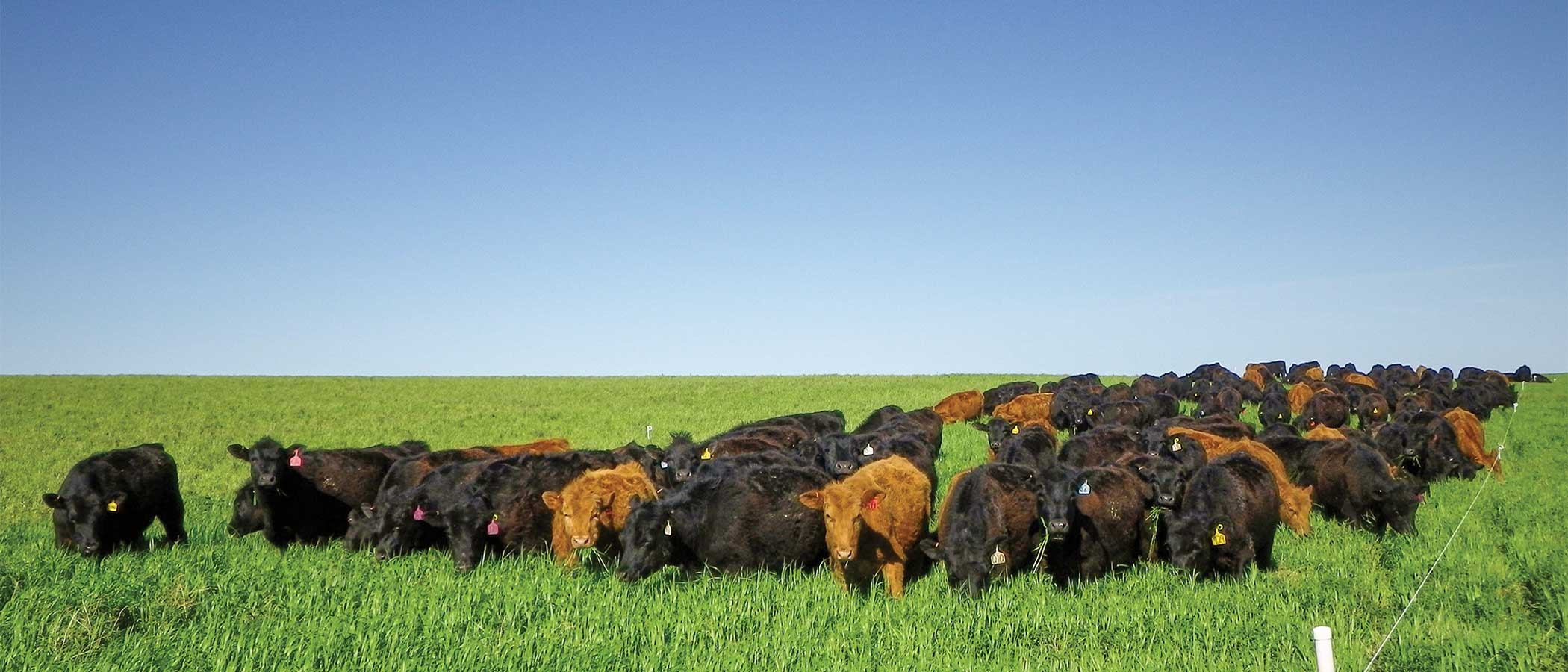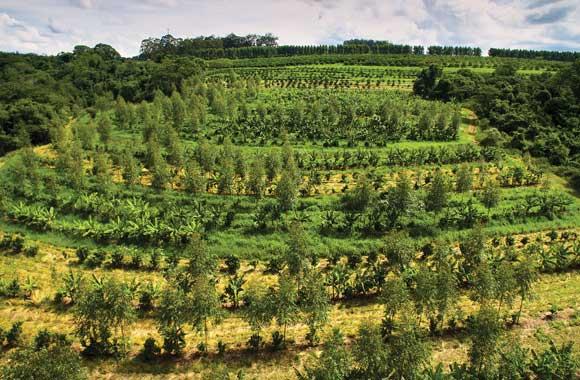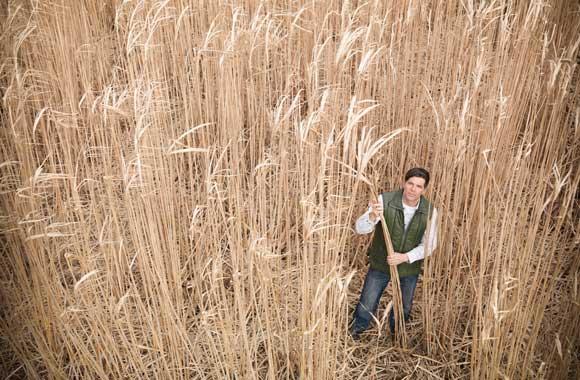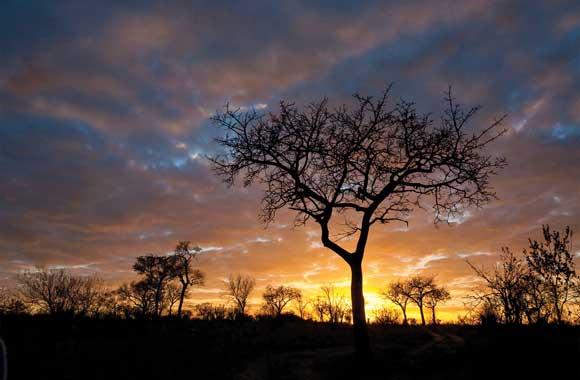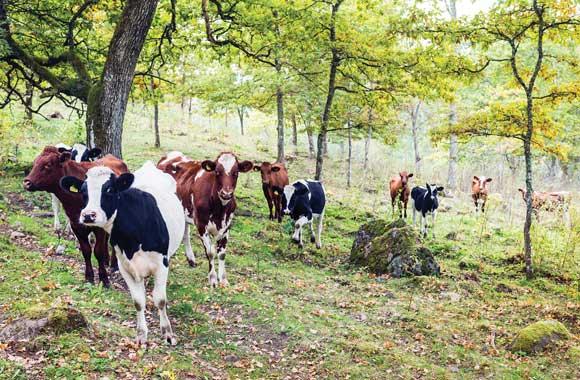Managed Grazing
Managed grazing involves carefully controlling livestock density and timing and intensity of grazing. Compared with conventional pasture practices, it can improve the health of grassland soils, sequestering carbon.
Reduced/Sequestered
2020–2050
To Implement
Operational Savings
Impact
Managed grazing can sequester 13.72–20.92 gigatons of carbon dioxide by 2050. However, this does not reduce the 10 gigatons of methane that are emitted on that grazing land today. To achieve this level of sequestration, adoption of managed grazing practices would need to increase from 71.6 million hectares to 502.1–749.02 million hectares over 30 years. Lifetime net operational savings are US$604.53–935.41 billion on a US$31.73–49.14 billion initial investment.
Introduction
Asner et al. (2004) reported that livestock grazing covers more than 3.3 billion hectares, or 25 percent of the world’s land area, making it humanity’s largest land use. Poor grazing practices have contributed to land degradation and loss of soil carbon. Managed grazing practices, on the other hand, can enhance net carbon sequestration and other aspects of soil and vegetation by controlling intensity and timing of grazing, enclosing grasslands to encourage resting, and/or adopting other grazing practices.
Project Drawdown defines managed grazing as strategically adjusting stocking rates, timing, and intensity of grazing to enhance carbon sequestration. This solution replaces conventional grazing on grasslands, including both pastures and rangelands.
Improved grazing can sequester 0.5–3 metric tons of carbon per acre. Ruminant-associated emissions of the greenhouse gases methane and nitrous oxide continue, but these are more than offset by sequestration until soil carbon saturation is achieved. We take the conservative assumption that greenhouse gas emissions do not change with conversion from conventional to managed grazing.
Methodology
Total Land Area
To evaluate the extent to which a Food, Agriculture, and Land Use sector solution can reduce greenhouse gas emissions and sequester carbon, we need to identify the total land area available for that solution. To avoid double counting, we use an integration model that allocates land area among all Food, Agriculture, and Land Use sector solutions. This involves two steps. First, we classify the global land area into agro-ecological zones (AEZs) based on the land cover, soil quality, and slope, and assign AEZs to different thermal moisture regimes. We then classify the AEZs into “degraded” and “nondegraded.” Second, we allocate the solutions to AEZs, with the solution most suited to a given AEZ or sets of AEZs assigned first, followed by the second-most-suited solution, and so on. Because it’s hard to predict future changes, we assume the total land area remains constant. Total land area represents both the implementation and functional unit.
Total land area for managed grazing is 1.2 billion hectares, consisting of nondegraded grassland. Current adoption of managed grazing (defined as the amount of functional demand supplied in 2014) is estimated at 71.6 million hectares. This figure is the mean in million hectares of: 1) total reported adoption from the two leading holistic grazing nongovernmental organizations (NGOs), 2) the total certified organic grazing land as reported by two leading NGOs, and 3) the total of data points from five studies representing South America, Canada, the US, Australia, and China, which collectively account for 54 percent of global grazing land (FAOStat 2019).
Adoption Scenarios
We developed 10 custom adoption scenarios based on low, medium, and high regional and country-level estimates available in the literature and gathered through personal communication. The conservative adoption scenarios assume adoption through 2050, while some of the aggressive adoption scenarios consider an early peak adoption by 2030.
We calculated impacts of increased adoption of managed grazing from 2020 to 2050 by comparing two growth scenarios with a reference scenario in which the market share was fixed at current levels.
- Scenario 1: 479.39 million hectares are adopted (41 percent of the total available land area).
- Scenario 2: 703.69 million hectares are adopted (61 percent of the total available land area).
Emissions, Sequestration, and Yield Model
We used sequestration rates of 0.67, 0.48, 0.64, and 0.63 metric tons of carbon per hectare per year for tropical-humid, temperate/boreal-humid, tropical semi-arid, and temperate/boreal semi-arid areas, respectively, based on meta-analysis of 55 data points from 22 sources. We assume that there is no change in methane and nitrous oxide emissions.
We set yield gains over the reference scenario at 21.4 percent based on meta-analysis of 14 data points from 11 sources.
Financial Model
All monetary values are presented in 2014 US$.
We estimated the first costs of managed grazing at US$75.01 per hectare. We assumed that there is no first cost to the conventional practice because it is already in place on the land. We based results on meta-analysis of 15 data points from five sources. We calculated net profit per hectare at US$342.2 per year for the solution (based on meta-analysis of 18 data points from 12 sources), compared with US$154.12 per year for the conventional practice (based on 20 data points from 15 sources). We calculated annual operational cost per hectare at US$626.43 for the solution (based on meta-analysis of 15 data points from 10 sources), compared with US$672.41 for the conventional practice (based on 11 data points from eight sources).
Integration
Project Drawdown’s Agro-Ecological Zone model allocates current and projected adoption of solutions to the planet’s forest, grassland, rain-fed cropland, and irrigated cropland areas. Adoption of managed grazing was limited to nondegraded grassland, and was the second-highest priority there after the Silvopasture solution.
Results
Scenario 1 reduced carbon dioxide equivalent greenhouse gas emissions by 13.72 gigatons by 2050. The net first cost was US$31.73 billion. Lifetime net profit was US$2.05 trillion, and lifetime net operational savings were US$604.53 billion. Global livestock yield increased 4.26 million metric tons from 2020 to 2050.
Scenario 2 reduced carbon dioxide equivalent emissions by 20.92 gigatons by 2050. The net first cost was US$49.14 billion. Lifetime net profit was US$3.18 trillion, and lifetime net operational savings were US$935.41 billion. Global livestock yield increased 6.74 million metric tons from 2020 to 2050.
Discussion
Benchmarks
Projected impacts for this are within Intergovernmental Panel on Climate Change (IPCC) benchmarks for managed grazing. The IPCC estimates an impact of 0.1–0.8 gigatons of carbon dioxide equivalent per year by 2030 (Smith, 2007), and IPCC (2019) ranks managed grazing as having a “moderate” climate impact, a category for which the range is 0.3–3.0 gigatons of carbon dioxide equivalent greenhouse gas emissions per year in 2030, while our model shows 0.4–0.7 gigatons of carbon dioxide equivalent savings per year in 2030. Our calculations are thus in line with the available benchmarks.
Limitations
More robust adoption data would improve the model results. Financial data are also rarely reported and are largely limited to Organization for Economic Cooperation and Development (OECD) countries. Financial results would benefit from robust data from other regions. Yield gain data is also very limited in this study.
Conclusions
Managed grazing addresses the world's most widespread land use. It represents a net-sequestration system for producing livestock products. Even the most aggressive Plant-Rich Diets solution scenarios show significant need for livestock products in 2050. Thus, managed grazing is an essential supply-side food solution in any mitigation program.
References
Asner, G. P., Elmore, A. J., Olander, L. P., Martin, R. E., & Harris, A. T. (2004). Grazing Systems, Ecosystem Responses, and Global Change. Annual Review of Environment and Resources, 29(1), 261–299.
FAO Statistical Service online (2019)
Smith, Pete, et al. "Agriculture." Contribution of Working group Climate Change 2007: Mitigation of Climate Change: Working Group III contribution to the Fourth Assessment Report of the IPCC. Cambridge University Press, 2007. 497–540
What You Can Do
If you eat meat, consider purchasing grass-fed options.
Write a letter to the editor explaining the climate benefits of managed grazing.
- Expand your knowledge by exploring another Drawdown solution.
Co-benefits
Managed grazing improves soil health and reduces nutrient pollution in streams and rivers.

